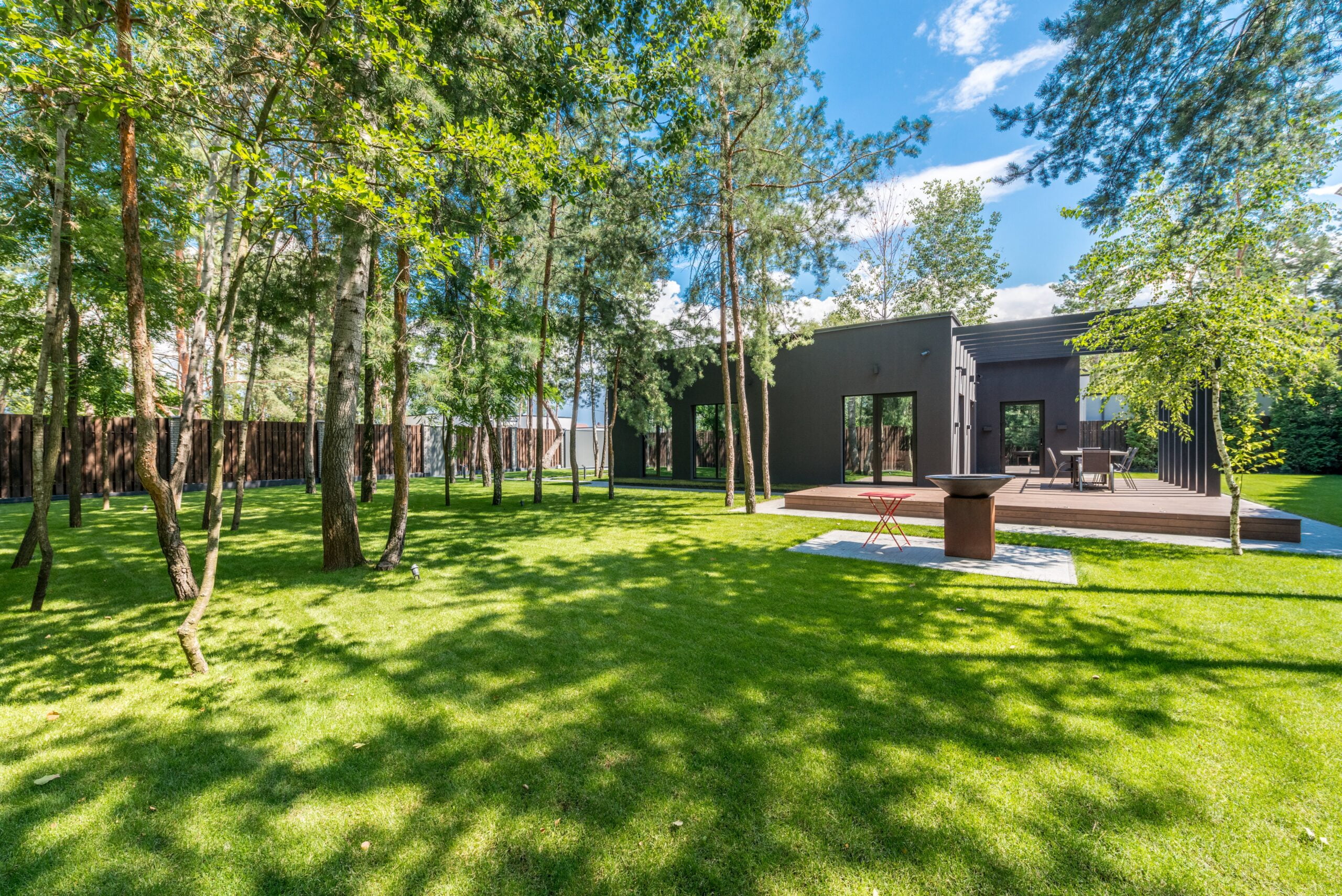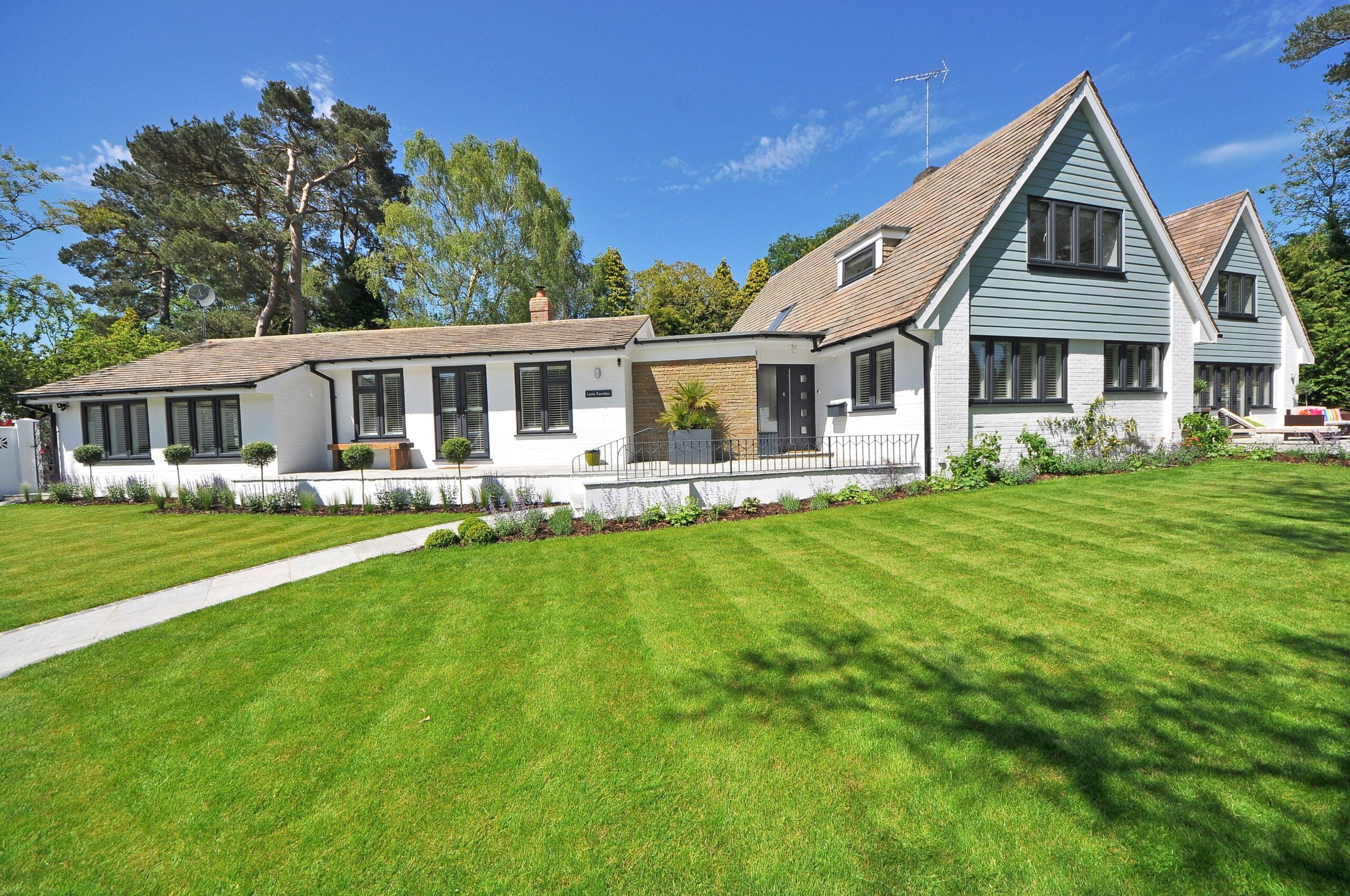
Juokaujama, jog tikrą anglišką veją galima turėti tik pasėjus augalus ir šimtą metų juos pjaunant. Tiek laiko tikrai nereikia, tačiau specialistai pataria, kad gerai suplanuoti reikia ir daugiau darbų, o kai kuriuos tenka atlikti ir kelis kartus per metus. Šiuo metu jau reikėtų pasirūpinti vejos tręšimu rudeninėmis trašomis.
Kaip sakė bendrovės „Linas Agro“ regiono agronomė Regina Kanevičienė, su klientais, kurie nori prie namų turėti gražią veją, pokalbis prasideda nuo jų poreikių išsiaiškinimo. „Labai svarbu žinoti, ko žmonės tikisi, kadangi vejos būna įvairios. Galbūt vieniems užtenka tik žalios pievelės, kurioje lakstytų vaikai. Kitiems – daugiau grožio. Tretiems – reprezentacinės vejos. Taip pat svarbu žinoti, kiek šeimininkai yra nusiteikę skirti laiko vejos priežiūrai, kadangi vienoms jos reikia daugiau, kitoms – mažiau. Ir tai toli gražu ne vien pjovimas žolei paūgėjus. Tik išsiaiškinus, ko žmonės tikisi, galima pateikti tinkamus sprendimus ir patarimus“, – kalbėjo agronomė.
Svarbu tinkamai parinkti sėklas
Vejos įrengimas šalia namų ar kitokios paskirties pastatų prasideda nuo pagrindo paruošimo, kurį reikia atlikti itin kruopščiai, kadangi želdynai čia turės augti ne vienerius metus. Pirmiausia būtinas tinkamas grunto parinkimas ir sutankinimas. Pavyzdžiui, jei vejai numatytoje vietoje turimas žvyro ar molio pagrindas, visų pirma reikia pasirūpinti augaliniu sluoksniu, kuriame žolė galėtų išleisti šaknis. Šiame etape, kaip aiškino R.Kanevičienė, gyventojai vis dažniau naudojasi apželdintojų paslaugomis. „Toliau seka sėklų parinkimas. Reikia atsižvelgti, ar vietovė yra atvira ir saulėta, ar atvirkščiai – čia bus pavėsis. Ar klientas nori šiurkštesnės vejos, ar tokios, po kurią galima bėgioti basiems? Ar numatyta laistymo sistema, ar ne? Nuo tokių dalykų priklauso, kokios sėklos tiks“, – pasakojo specialistė. Žolynai, kurie turi gilesnę šaknų sistemą, paprastai būna ne tokie dekoratyvūs ir gražūs, užtat greičiau atsigauna po sausrų ir kuria reprezentacinį vaizdą. „Jeigu mes sėjame pavėsyje ar žemesnėje drėgnoje vietoje, kur užmirkimai yra didesni, tai dedame daugiau raudonųjų eraičinų ir renkamės mišinius, kurie skirti auginti pavėsingose vietose, nes ten panaudotos žolių rūšys ir veislės geriau išsilaiko. Jei norime atsparios mindymui vejos ar įsirengti sporto aikštelę, tai turime dėti daugiau komponentų, kurie nebijo mindymo ir po jo greičiau atsistato. Visi vejų žolių mišiniai turi savo paskirtį. Vieni skirti auginti atvirose vietose, kiti pavėsyje, smėlingoje ar sausoje dirvoje. Skiriasi jų atsparumas mindymui, sausrai, vandens poreikiui, yra įvairaus dekoratyvumo – nuo pievelių iki reprezentacinių, intensyviai prižiūrimų vejų ir t.t.

Todėl mišinį reikėtų rinktis tokį, kuris tiktų konkrečiai jūsų aplinkai ir jūsų poreikiams, ir jokiu būdu jų nemaišyti tarpusavyje, nes į kiekvieną vejų žolių mišinį įeinančios žolių rūšys ir veislės tarpusavyje yra suderintos pagal dekoratyvumą, spalvą, atsparumą ir ilgaamžiškumą. Gali būti, kad sumaišius skirtingus mišinius, galite nusivilti, nes veja gali augti nevienodu tempu, skirtis spalva ar tankumu“, – teigė įmonės „Dotnuva Seeds“ produkto vadybininkas Vilmantas Petrauskas. Bendrovė „Linas Agro“ savo klientams siūlo antrinės grupės įmonės „Dotnuva Seeds“ bei Danijos selekcininko ir gamintojo įmonės DLF – vejos sėklų mišinius. Tai profesionaliai atrinkti ir sudaryti mišiniai nuo paprasčiausių (2–3 rūšių ir veislių) iki sudėtingiausių (5 rūšių ir 10 veislių) mišinių, skirtų įvairiausioms naudojimo sąlygoms. Ekologiniams ūkiams, naudojantiems mažiau pridėtinio azoto, siūlo mišinius su baltaisiais vejiniais dobilais.
Lemia dirvožemio, ne tik oro temperatūra
Įrengiant veją, pradėti sėją galima tuomet, kai bus tinkamos oro ir drėgmės sąlygos. Kai kas mano, kad pradėjus šildyti pavasario saulei jau galima imtis darbų. Tačiau viskas priklauso ne nuo paties oro, o nuo dirvožemio temperatūros (paprastai matuojama 5–10 cm gylyje), kuri turi būti ne mažesnė, kaip 8 laipsniai Celsijaus. „Sėjant sėklos negali būti įterptos per giliai – užtenka pusės centimetro. Taip pat turi būti užtikrintas pakankamas drėgmės kiekis“, – sakė R.Kanevičienė. Kiek dirvožemyje yra drėgmės, galima nustatyti tiek su drėgnomačiu, tiek plika akimi – jei veja ima džiūti, spalva tampa šviesiai žalia ar rusva, akivaizdu, kad ją reikia laistyti. O jeigu veja tinkamai išaeruota ir patręšta, tačiau atrodo negražiai ir jai stinga drėgmės, tuomet laistyti reikia retai, tačiau gausiai. Geriausia kartą per savaitę prieš naktį išpilti apie 10–20 litrų vandens vienam kvadratiniam metrui.
Pagrindiniai trąšų komponentai – trys
Kalbant apie buitinės vejos tręšimą, paprastai jis atliekamas du arba tris kartus per metus – dažniausiai pavasarį, vasarą ir rudenį. Pirmą kartą veja įprastai tręšiama balandžio mėnesį lėto arba greito veikimo pavasarinėmis trąšomis. Pasirinkimas priklauso nuo vejos išvaizdos – jei veja žalia ir nenukentėjusi po žiemos, naudojame lėto veikimo trąšas. Jei reta ir pageltusi, ar pažeista snieginio pelėsio – naudojame greito veikimo trąšas ir po 4–6 savaičių naudojame ilgo veikimo trąšas. Kitas tręšimas greito veikimo trąšomis – gegužės pabaigoje. Priklausomai nuo to, kaip veja atrodo, kiek buvo drėgmės ir šilumos, galimas ir dar vienas tręšimas. Ilgo veikimo trąšos veikia 3–4 mėnesius, o šiuo metu – rugpjūčio pabaigoje veja jau tręšiama rudeninėmis trąšomis.

Kaip pasakojo agronomė R.Kanevičienė, paprastai rekomenduojamos kompleksinės trąšos, kad jose nebūtų vien azotas. Jos vadinamos NPK trąšomis pagal pagrindinių komponentų cheminius simbolius – azotas (N), fosforas (P) ir kalis (K). Nepatręšus vejos, gali nutikti taip, kad šaknų sistema lėčiau vystysis ir sausros ar žiemos metu veja smarkiai išretės. Tuomet veją pavasarį gali tekti papildomai sutankinti at net atsėti. „Veja skarifikuojama (iššukuojamas vejos paviršius iki žemės) pavasarį. Iš vejos pašalinamos senos augalinės atliekos, kad ji vėdintųsi ir laisvai judėtų oras, drėgmė bei maisto medžiagos. Jei veja stipriai suspausta ar sumažėjęs vandens įgeriamumas ar pralaidumas, veją reikia aeruoti, subadant veją 10–15 cm gyliu ir panaudojant lengvą gruntą ar smėlį, maišytą su sėklomis. Pagerės maisto medžiagų judėjimas dirvoje ir veja sutankės. Visus šiuos darbus reikia atlikti tik įsitikinus, kad artimiausioje ateityje bus pakankamai drėgmės arba turėsite galimybę veją palaistyti. Labai svarbu, kad po vejos skarifikavimo ar aeravimo užtikrintume drėgmės režimą, nes atliekant šiuos darbus, dalinai atidengiamos vejų šaknys – jei bus labai sausas, nors ir šaltas, oras, veja labai nukentės ir bus reta. Jei veja pažeista dėl vykusių kasimo darbų, ar joje yra nesudygusių plotelių, atsėti (sutankinti) veją mes rekomenduojame tos pačios rūšies mišiniu, koks buvo pasėtas anksčiau. Jei veja išretėjusi vienodai visame plote, tuomet rekomenduojame mišinius, skirtus vejų atnaujinimui (šiuose mišiniuose parinktos augalų rūšys, kurios greičiausiai išretėja, tad bus atstatomas vejos balansas). Po šių darbų suaugusi veja atrodys kaip vientisas kilimas ir bus galima džiaugtis gražiu vaizdu“, – patarė bendrovės „Linas Agro“ regiono agronomė R.Kanevičienė.
Pjaunant svarbus teisingas aukštis
„Dotnuva Seeds“ produkto vadybininkas V. Petrauskas. Neišvengiamas vejų šeimininkų darbas šiltuoju metų laiku – vejos pjovimas. Pjaunant veją, svarbu parinkti tinkamą tam aukštį: įprastos buitinės vejos jis turėtų siekti 30–35 milimetrus, tačiau jei prasideda sausra, aukštį reikėtų padidinti iki 40–45 milimetrų. Kuo sudėtingesnis ir dekoratyvesnis mišinys, tuo žemiau jis pjaunamas. Kartais net iki 15–20 mm aukščio. Tačiau labai žemai pjaunamas vejas turėsite pjauti gana dažnai (kas 2–3 dienas) ir nuolat jas laistyti, kitaip vejos pradės džiūti ir gelsti.

Kaip sakė „Dotnuva Seeds“ produkto vadybininkas V.Petrauskas, kartais žmonės, matydami parudavusią, žemai pjaunamą veją, galvoja, kad jei jie pjaus veją aukščiau – 50 mm, ji atrodys žalesnė ir gražesnė. Tačiau aukštai pjaunant veją, ji išretės ir veją teks nuolat atnaujinti išbarstant papildomai sėklų. Nereikėtų leisti vejai užaugti per aukštai, o tada žemai nupjauti, nes tokiu būdu iš jos atimame lapuose sukauptas maisto medžiagas. Tad vietoj to, kad energiją skirtų šaknų sistemos vystymuisi ir taip tankėtų, ji priversta iš naujo kaupti maisto medžiagas. Paprastai veją galima nupjauti 1/3 jos aukščio. Tad jei veja buvo peraugusi, jos pjovimo aukštį reikėtų žeminti per keletą pjovimų,“– patarimais dalijosi V.Petrauskas.


